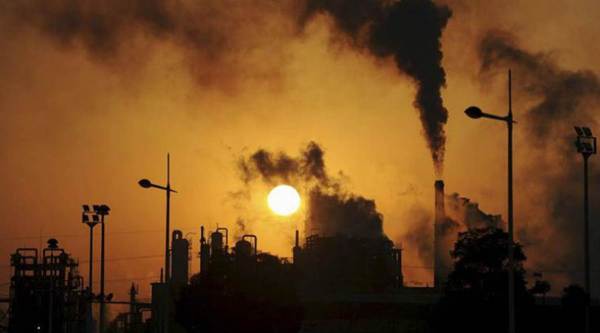Stay updated with the latest - Click here to follow us on Instagram
Activities that put food on our table cause 37% of all greenhouse emissions: IPCC report
The new report on ‘Climate Change and Land’, released on Thursday afternoon, is second in the series of special focused reports that IPCC has been preparing on the specific request of governments and other organisations.
 Agriculture, forestry and other land uses released at least 12 billion tonnes of CO2-equivalent (all greenhouse gases) into the atmosphere every year between 2007 and 2016. (File)
Agriculture, forestry and other land uses released at least 12 billion tonnes of CO2-equivalent (all greenhouse gases) into the atmosphere every year between 2007 and 2016. (File)
Agriculture and associated land activities related to food production could be contributing over a quarter of the global emissions of greenhouse gases, a new major report by the Intergovernmental Panel on Climate Change (IPCC) has said.
If outside-the-farmgate activities, like transportation, energy and food processing industries, are included, emissions from global activities that put food on our table could account for as high as 37 per cent of all greenhouse gas emissions. The report urges more sustainable agriculture and land-use practices.
“If emissions associated with pre- and post-production activities in the global food system are included, the emissions are estimated to be 21 to 37 per cent of total net anthropogenic (man-made) GHG (greenhouse gas) emissions,” the report says.
It also says that over a quarter of the food produced is either lost or wasted. Even in its decomposition, it releases emissions.
This new report on ‘Climate Change and Land’, released on Thursday afternoon, is second in the series of special focused reports that IPCC has been preparing on the specific request of governments and other organisations. The first in the series was the Special Report on Global Warming of 1.5 degree Celsius that was released in October last year.
The land report released today is an assessment of how land systems are contributing to global warming and are in turn being impacted by the resultant climate change. It also suggests more sustainable land management pathways.
The report says that human beings use nearly 70 per cent of the global ice-free land for various purposes. Activities on land, like agriculture or forestry, are sources of greenhouse gas emissions. At the same time, the soil, trees and vegetation also absorb carbon dioxide, thus acting as carbon sinks.
Agriculture, forestry and other land uses together accounted for about 23 per cent of all greenhouse gas emissions, globally, between the years 2007 and 2016, releasing at least 12 billion tonnes of CO2-equivalent (all greenhouse gases) in the atmosphere every year during this period. This included about 13 per cent of all carbon dioxide, 44 per cent of all methane, and 82 per cent of all nitrous oxide being emitted every year. During the same time, soil, vegetation and forests absorbed nearly 11.2 billion tonnes of CO2 every year.
“Since the pre-industrial period, changes in land cover due to human activities have led to both a net release of CO2, contributing to global warming, and an increase in global land albedo (ratio of heat absorbed to heat reflected), causing surface cooling. Over the historical period, the resulting net effect on globally averaged surface temperature is estimated to be small,” it says.
It says that the global rise in temperature has been much faster over land than over the entire planet. The mean land surface air temperature in the period 2006 to 2015 was about 1.53 degree Celsius above the average of pre-industrial period of 1850 to 1900. During the same time the global mean surface temperature, that accounts land as well as oceans, was higher only by 0.87 degree Celsius.
This additional warming over land could have led to increased frequency, intensity and duration of heat-related events, like heat waves, across the world.
“Both global warming and urbanization (a result of land use change) can enhance warming in cities and their surroundings, especially during heat related events, including heat waves. Night time temperatures are more affected by this effect than daytime temperatures. Increased urbanization can also intensify extreme rainfall events over the city or downwind of urban areas,” it says.
To restrict the emissions from land, forests and agriculture, the report suggests more sustainable agriculture practices, reduction and elimination of food waste, consumption of balanced diet, arresting deforestation and restoration of damaged ecosystems.







